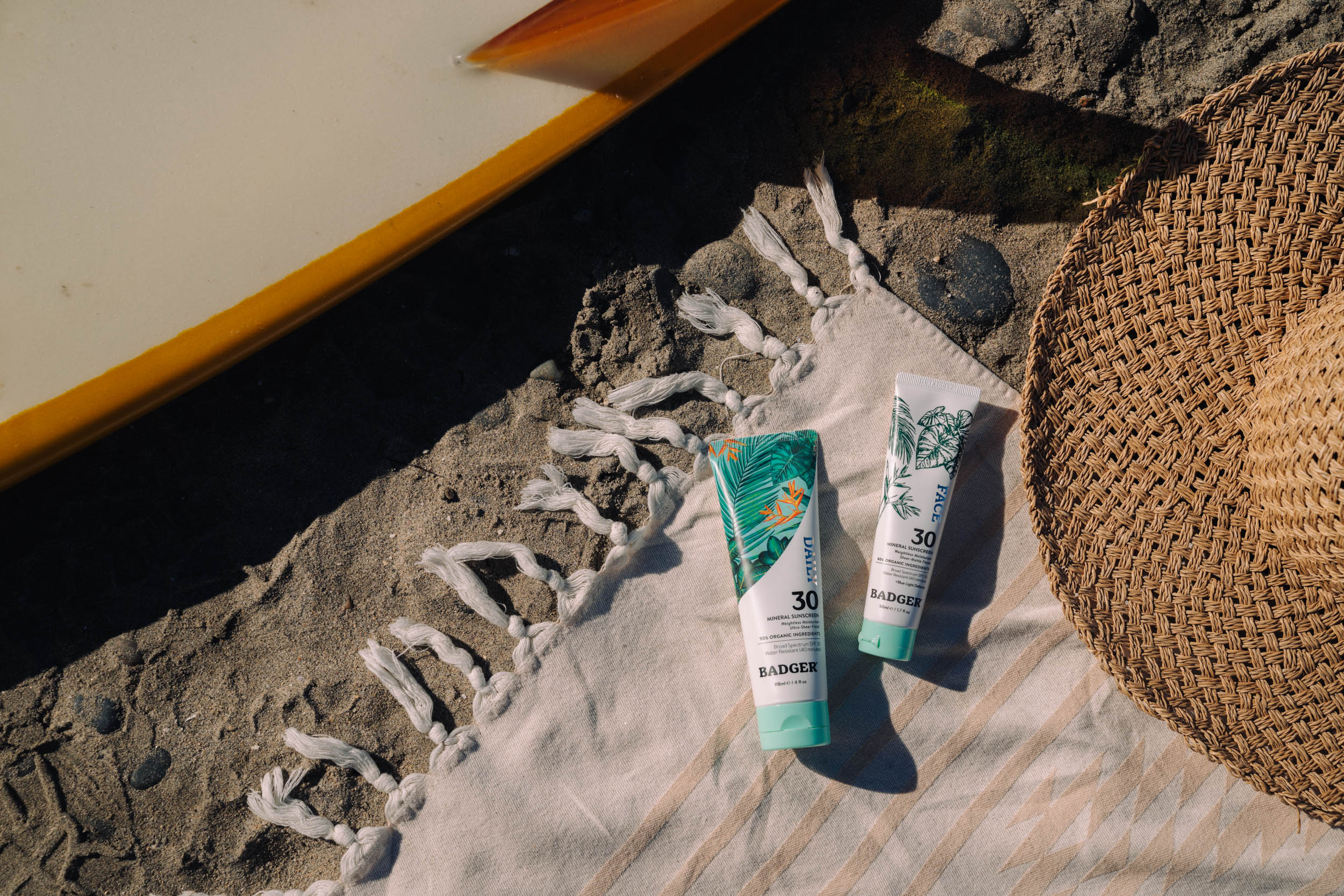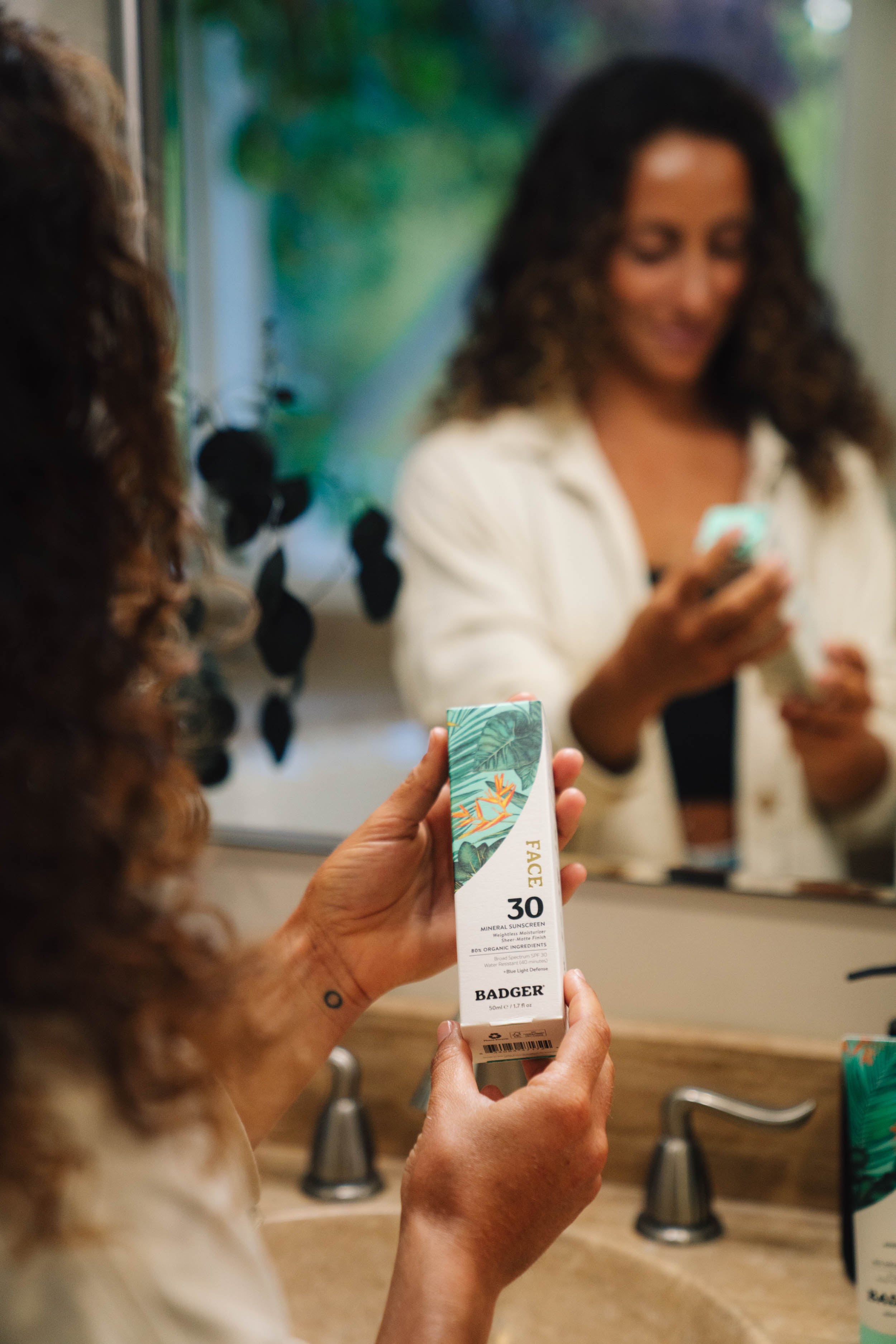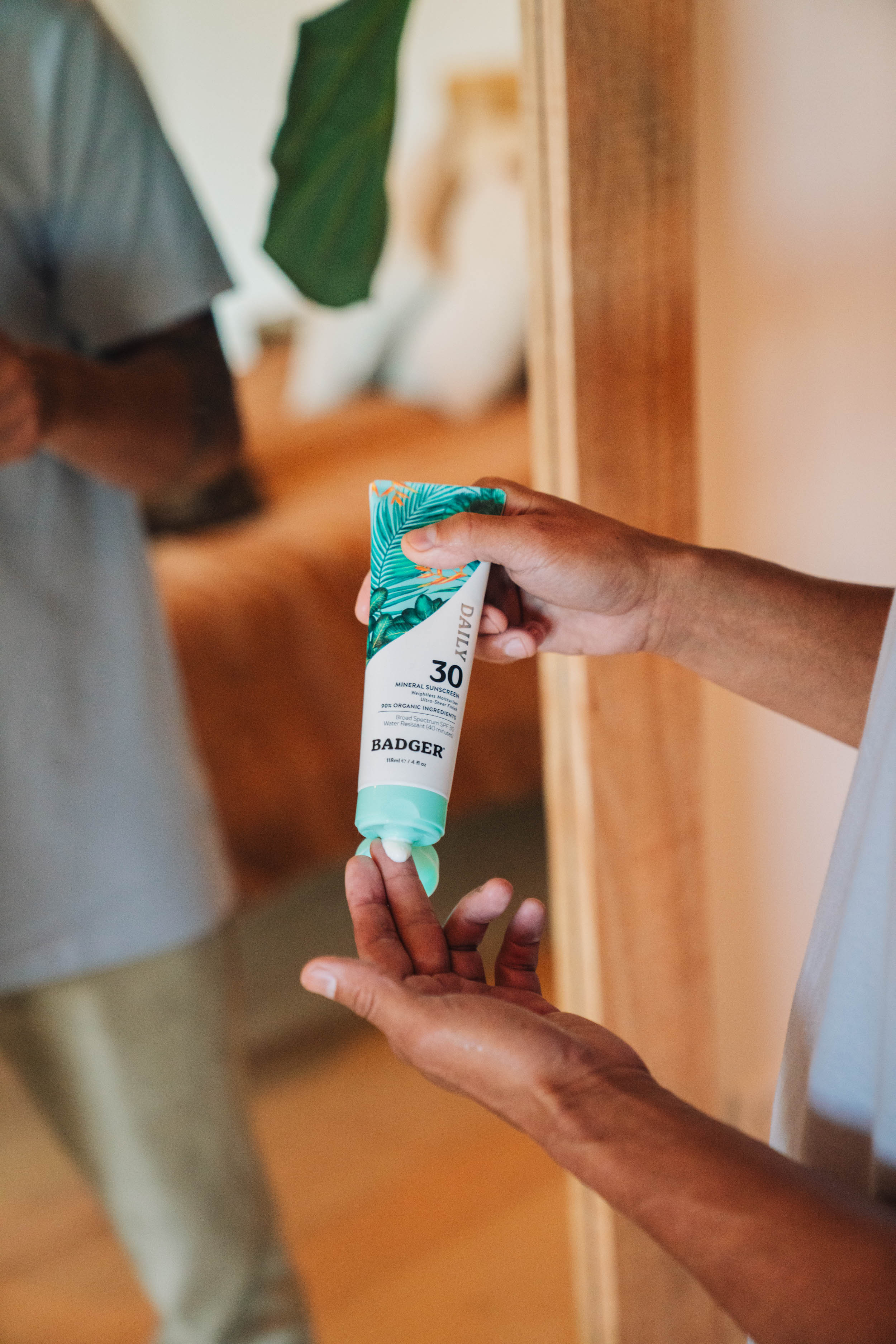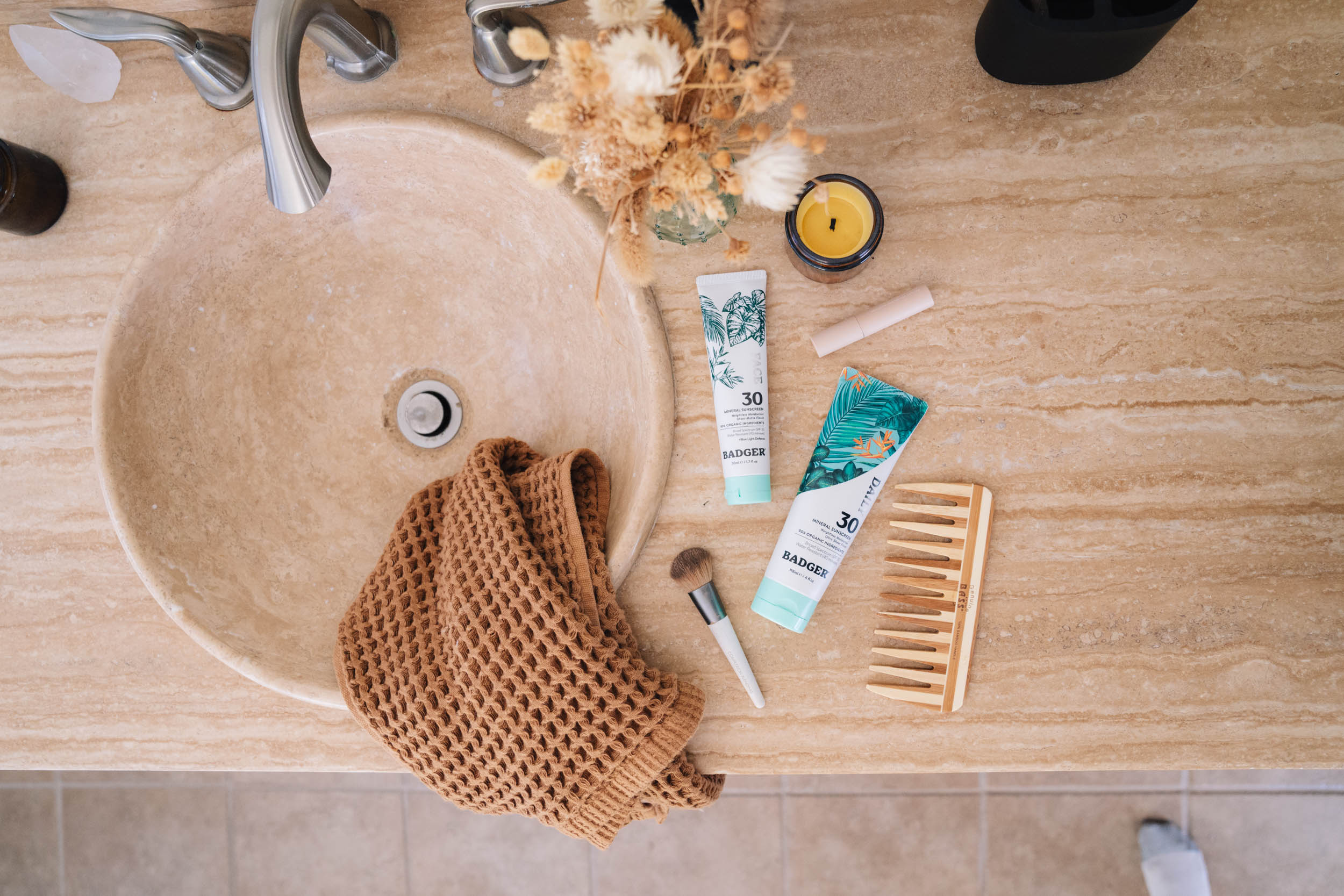Finally: Mineral Sunscreen That Feels Like It’s Barely There

We all know we should be wearing sun protection every day. From skin cancer to signs of premature aging, sun damage can have lasting effects on your skin and health.
Unfortunately, people have previously had to choose between chemical sunscreens that contain unpronounceable ingredients, or mineral sunscreens that are hard to apply and leave skin feeling greasy with an unsightly white cast. And while several brands have called their sunscreens “mineral” to appeal to planet-conscious shoppers, some have proven to be even less safe than the chemical versions they offer!
The concept of a truly safe non-nano zinc oxide sunscreen that provides lasting broad-spectrum protection while also blending effortlessly was unfathomable to most. But “unfathomable” doesn’t scare us. In fact, Badger’s organic mineral sunscreens were among the first ever back in 2005. We revolutionized the sunscreen world by creating a mineral sunscreen that provided powerful protection. The following year, the Environmental Working Group (EWG) released its first guide to safe sunscreens with Badger at the top of the list.
Our new SPF 30 Daily and SPF 30 Face mineral sunscreens are turning all preconceived notions on their heads, and we’re excited for you to try them for yourself. But first, we want to help you understand what makes these two formulas special as well as answer a few questions.

What Makes Our Daily Mineral Sunscreens So Unique?
If you’ve used mineral sunscreen, you know that proper application includes rubbing it in well. Most formulas utilize zinc oxide, which protects by sitting on top of skin rather than being absorbed into it. This forms a protective physical barrier against UVA and UVB rays.
Our classic sunscreens are fantastic at providing lasting protection with organic, reef-safe ingredients for any outdoor adventures. We decided to take our tried-and-true formulation techniques one step farther to create sunscreens that blend effortlessly and leave a sheer finish, making them the perfect additions to your daily skincare routine.
Our new SPF 30 Daily and SPF 30 Face zinc oxide sunscreens include moisturizing ingredients, allowing them to work double-duty to keep your skin hydrated while protecting it from UVA and UVB rays. They are also self-preserving, meaning we didn’t need to add a long list of impossible-to-pronounce ingredients as a preservation system.
Can You Use Face Mineral Sunscreen on Your Body?
Badger’s SPF 30 Daily is a sunscreen and body moisturizer in one, while our SPF 30 Face is perfect for (you guessed it) your face. Thanks to their ingredients and advanced formulation techniques, both blend easily and make the perfect SPF for folks with sensitive skin. But while they can be used interchangeably, we wouldn’t recommend it.
Facial mineral sunscreens are designed to be gentle and lightweight since the skin on your face is delicate. Our dermatologist-tested facial sunscreen formula includes the same moisturizing base and natural zinc oxide protection as our SPF 30 Daily, but contains 2 additional ingredients that make it ideal for the face: mattifying babassu starch (so that any oiliness you might feel after application will disappear within a minute or two) and golden seaweed extract, which naturally protects the skin from blue light exposure.
Since Face sunscreens come in smaller bottles due to the unique formulation, you’ll probably run out faster if you use it all over your body.

What Is Blue Light Protection?
Blue light (also called high energy visible light, or HEV) is the closest part of the visible light spectrum to ultraviolet light. Since it has a longer wavelength than UV rays, blue light can penetrate deeper into your skin where your collagen and elastin live. It has enough energy to generate free radicals, which damage your skin cells and cause premature signs of aging and discoloration. From lightbulbs to computer and cellphone screens, devices that emit blue light are all around us every day.
Blue light protection can reduce the risk of DNA damage, cell and tissue death, skin barrier damage, and photoaging caused by blue light. In the case of our SPF 30 Face sunscreen, golden seaweed extract protects the proteins found in the outer layer of your skin. These proteins are the frontlines of defense for the epidermis and protect your body from environmental aggressors that can trigger immune responses such as inflammation. It also protects the skin’s Natural Moisturizing Factor (NMF), which pulls moisture from the air into your cells to keep skin moisturized. Certain factors contribute to how much NMF your skin produces, thereby affecting its ability to keep itself moisturized. In tests, NMF content was protected 62% by the golden seaweed extract.



Can You Use Zinc Oxide Body Sunscreen on Your Face?
You can, but we wouldn’t recommend it. Our Face sunscreen is specifically designed for the delicate skin on your face. Badger Daily mineral sunscreen has an ultra-sheer finish which leaves your skin with a dewy glow, while our Face sunscreen is mattifying when applied in proper amounts (if you’re not particularly prone to sunburns, ¼ tsp should be enough. If you have burn-prone skin, use up to 1/3 tsp).
Both formulas offer SPF 30 broad-spectrum protection and 40 minutes of water resistance, which means they are equally safe to use anywhere on your body and provide reliable outdoor protection. But if you want to make both bottles last, we recommend using our Daily sunscreen on your body and Face sunscreen on your face.
Can You Wear Make Up on Top of Face Sunscreen?
Yes. Applying makeup over mineral face sunscreen won’t compromise the SPF and our SPF 30 Face sunscreen can also help makeup stick throughout the day. We recommend applying the sunscreen first, letting it set, and then applying your makeup as desired. And since our formula offers SPF and moisturizing in one, you can skip wearing a separate moisturizer.

